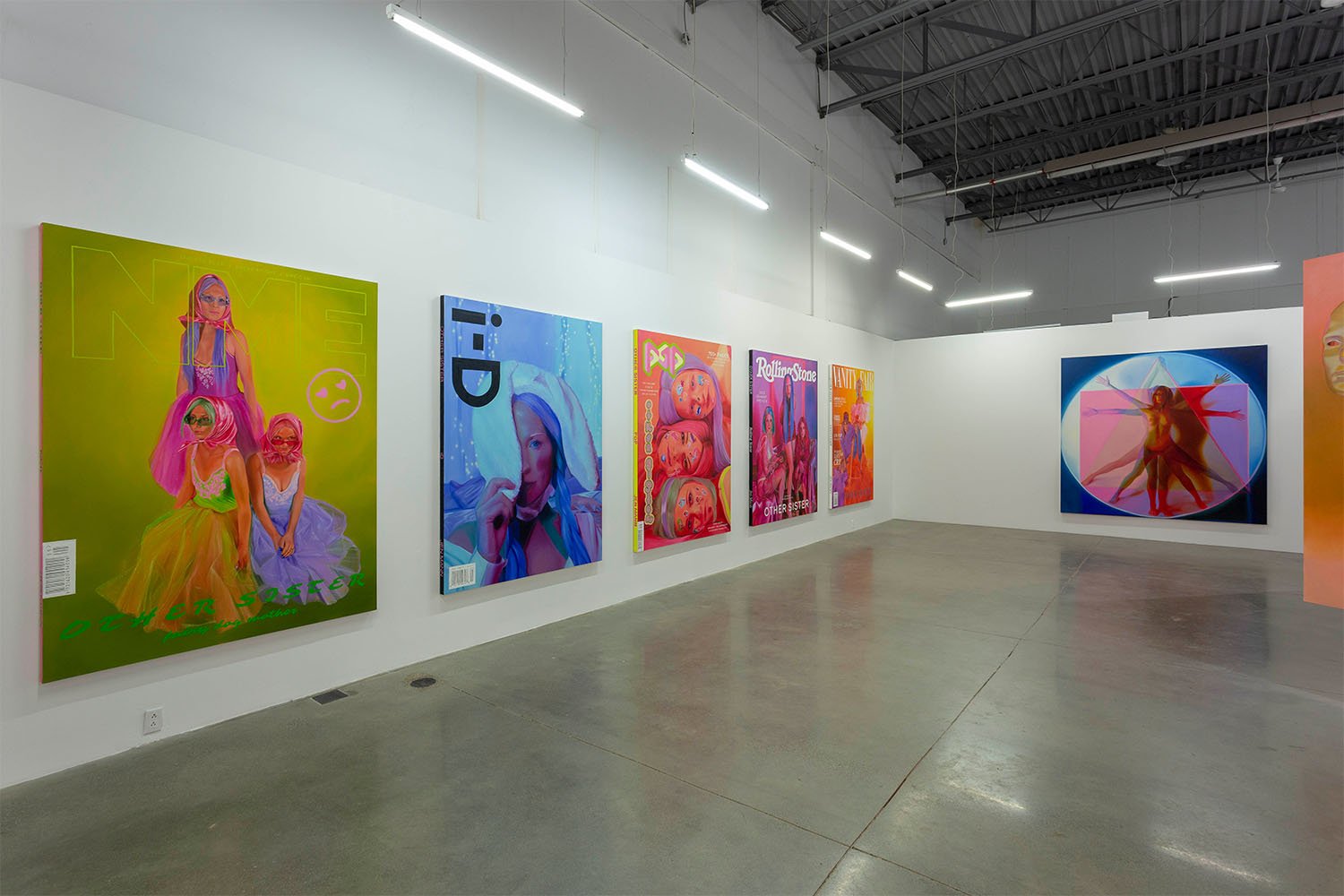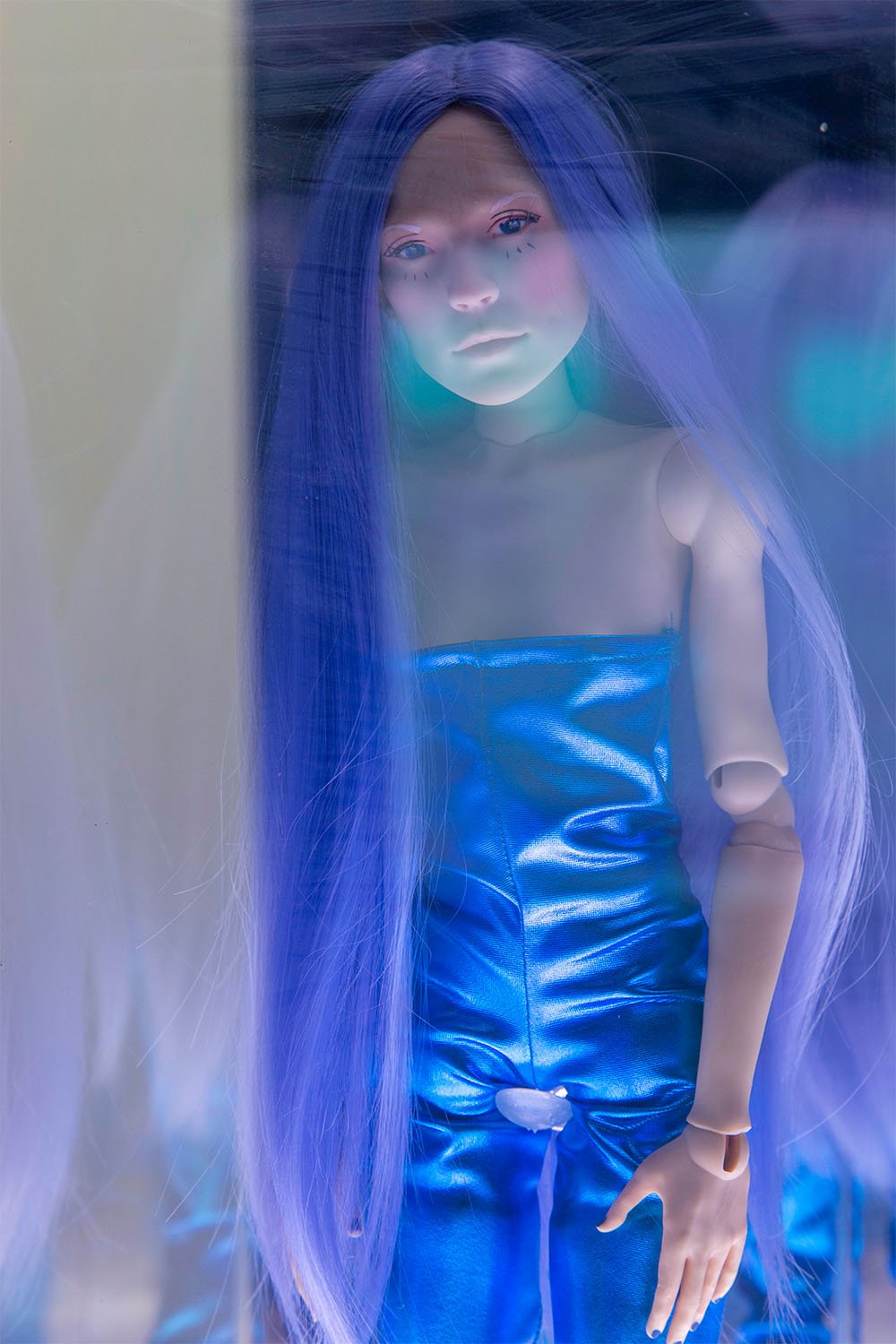Jen Mann
Other Sister
June 23 - Sept 3, 2022
OPENING
Thursday, Jun 23, 2022, 6 p.m. - 9 p.m.
From the self-portrait to the selfie, we are inherently driven by the need or desire to represent ourselves in images. Across history, from ancient Egypt to well-known self-portraits by Rembrandt, Van Gogh, and Frida Kahlo, over time and circumstance the purpose and means of representation shift and change. With the rise to dominance of advertising media and consumer-driven economic models during the 1970s and ‘80s, artist Andy Warhol presciently recognized the potential of the self to be commoditized and transformed into a marketable ‘brand’. Today, representation of the self and identity are often defined through the intrusive and distorted lens of media technologies and corporate culture. We knowingly accept and perpetuate fabricated illusions and manipulations of truth, seduced by our desires to consume and be consumed.
For her project Other Sister, Toronto-based artist Jen Mann has constructed an elaborate, fictional narrative that enticingly engages, as it simultaneously critiques our contemporary culture of self-representation. ‘Other Sister’ is the persona and name of the girl-pop group that consists of the artist and two of her friends that are sisters. On display are ambitious series’ of works in a range of media that include painting, sculpture, sound, video, performance, merchandise and social media components, all convincingly designed to represent the band. The exhibition playfully mixes vocabularies of art and marketing, and confuses boundaries between fact and fiction. Enter and exit through the gift shop where a vinyl record produced by the band, and other related merchandise is available for purchase. Within the gallery spaces the alluring made up faces and costumes of the band members are lusciously rendered in billboard-scale paintings resembling luxury ads and glossy magazine covers. A viewing room presents several of the band’s self-produced music videos. All of it real, all of it for sale, all of it produced by the artist – and at the same time, as viewers eventually discover, ‘Other Sister’, the band, is not a real entity. All is not as it seems in the world of marketing and promotion. Yet, astonishingly, these days we fully accept that there is no truth in advertising. We knowingly suspend our disbelief and happily ‘buy into’ the fantasy because it makes us feel good, and we consummate that emotion through the ultimate affirmative expression of our culture: the financial transaction. Mann has generously provided us with a range of options to suit all budgets, from masterful paintings and expertly-crafted sculptures for the discerning collector or institution, to the album, the apparel, and inexpensive pins and stickers. We are all invited to participate!
However, this display, this project, is not really about the band, ‘Other Sister’. While we may allow ourselves to be caught up in the fantasy, the items on display reside within the space and context of cultural critique. Beneath the convincingly seductive surfaces, other discourses are at play. ‘Other Sister’, the exhibition, is a conceptual experience meant to confront our, and the artist’s complicity in a culture of manipulation, false promise and illusion. The vulnerable surfaces of desire reflect more complicated emotions and fears, underlying social and economic conditions, as well as other dynamics and manipulations of power and spirit.
Since Warhol’s time, from pop music and film, to the proliferation of contemporary art fairs and biennales, art and culture have become multi-billion-dollar global industries that function effectively as agents of capitalist economic systems. Given his commercial background, Warhol was among the pioneers in merging the vocabularies of art and commerce, advertising and marketing, models that are by now standard in today’s arts and cultural industries. Innovatively making use of the tools and technologies available at the time, he played upon the desires and fantasies embodied by consumer and celebrity culture to fabricate and market identities and accompanying mythologies that blurred fact and fiction.
In our current era, with the pervasiveness of technologies and entrenched consumer-driven economic systems, distinguishing fact from fiction, truth from reality, recognizing boundaries between public and private space, has become even more complex. Where and how do we find our place in the world? How do we perceive ourselves, and relate and connect to others, when reality and identity are wholly defined through the lens of economic value and the corporate gaze? Where identity may have once held deep meaning based around intimate relationships to family, community, history, geography, it is now a product itself. Identity and private information are commodities to be bought, sold or stolen. Our value to society is determined by our ability to produce and consume. Reflecting the dominant paradigm of their culture, through ‘Other Sister’, Mann constructs identity through an alluring advertising aesthetic of desirability and consumption. With the right industry marketing and promotion, it is perfectly feasible that ‘Other Sister’ could be the next big thing. Whether or not they even exist doesn’t really matter.
The story of ‘Other Sister’ is a layered, narrative fiction; an ambitious cultural project that challenges us to question our role and our agency in the evolution of our individual and collective identities. How do we represent ourselves when every aspect of our lives are monetized, monitored and transformed into product and brand? With ‘Other Sister’ Jen Mann treads a delicate line that, perhaps, we all do, as participants in cycles of consumption, and raises uncomfortable questions around the cultural conditions of our time that shape and define identity.































